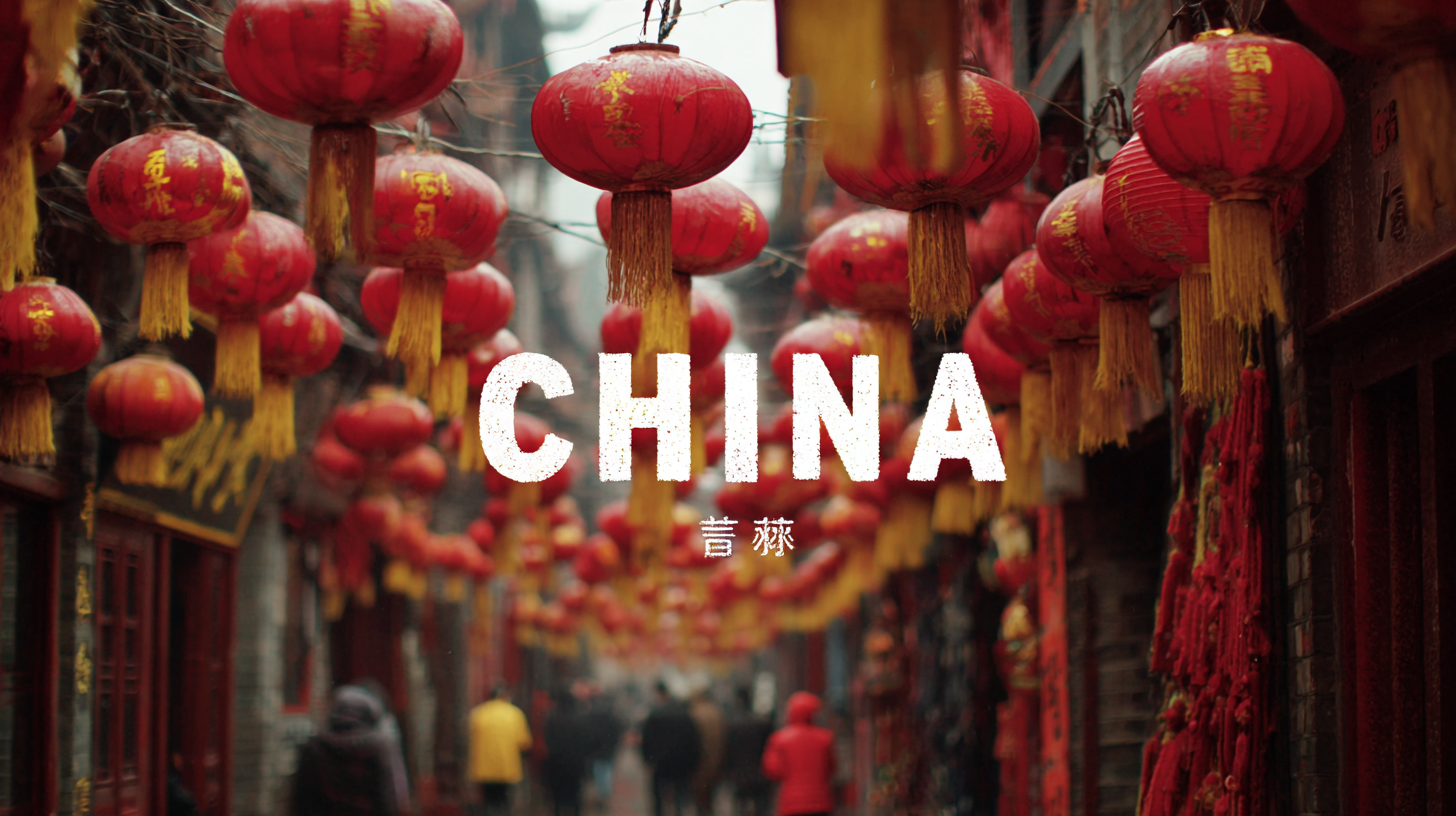
Exploring the Best China Alternatives for Quality and Value
As global manufacturing continues to evolve, businesses and consumers alike are increasingly seeking alternatives to traditional production hubs like China. While China has long been synonymous with quality manufacturing at competitive prices, rising labor costs, trade tensions, and the quest for more sustainable supply chains have prompted a shift towards exploring new options. This blog delves into the most promising alternatives that not only match the quality standards established by Chinese manufacturers but also offer exceptional value. From emerging markets in Southeast Asia to burgeoning industries in Eastern Europe and beyond, we will uncover the best alternatives that promise to deliver the same quality and efficiency that have made China a manufacturing powerhouse for decades. Join us as we navigate this landscape to identify where the future of manufacturing might lie beyond China's borders.

Identifying Emerging Markets: Key Competitors to China in Global Supply Chains
As global supply chains evolve, identifying emerging markets that can compete with China in terms of quality and value becomes essential for businesses seeking alternatives. According to a report by the McKinsey Global Institute, countries like India, Vietnam, and Mexico are rapidly gaining ground, exhibiting strong growth potential in manufacturing and logistics. India's manufacturing sector is projected to reach $1 trillion by 2025, driven by government initiatives like "Make in India" and a youthful workforce eager to enter the industrial arena.
On the other hand, Vietnam has emerged as a strategic player in electronics and textiles, catapulted by a surge in foreign direct investment, which hit $15.3 billion in 2020 as per the World Bank. This investment surge is supported by trade agreements like the Comprehensive and Progressive Agreement for Trans-Pacific Partnership (CPTPP), allowing Vietnam to attract businesses looking to circumvent tariffs associated with China. Similarly, Mexico stands out due to its proximity to the U.S. market, with over 80% of its exports being sent to its northern neighbor, which positions it as a favorable alternative for companies aiming to reduce lead times and transportation costs.
Assessing Quality Standards: How Alternatives Measure Up Against Chinese Products
When exploring alternatives to Chinese products, it's crucial to assess the quality standards these alternatives offer. Many countries, such as Vietnam, India, and Mexico, are emerging as appealing options for manufacturing. These nations have made significant strides in improving production practices, focusing on sustainable methods and adhering to international quality certifications. For instance, Vietnam has implemented rigorous quality control measures to enhance the reliability of its textiles and electronics, making them strong contenders in the global market.

Moreover, the shift toward alternatives is not just a matter of cost but also about providing value that aligns with consumer expectations. Countries like India emphasize craftsmanship, particularly in sectors like handicrafts and furniture, where quality can vary widely but often surpasses that of mass-produced items from China. Businesses seeking to diversify their supply chains are now encouraged to prioritize suppliers that demonstrate robust quality management systems, ensuring that standards meet or exceed those typically associated with Chinese products. This assessment not only fosters competition but also encourages innovation among manufacturers worldwide.
Value Propositions: Evaluating Cost-Effectiveness of China Alternatives in Various Industries
In today’s global marketplace, businesses are increasingly exploring alternatives to sourcing from China. The motivation behind this shift often stems from the need for greater transparency, quality assurance, and cost-effectiveness in supply chains. Evaluating the cost-effectiveness of these alternatives is crucial, as it not only impacts the bottom line but also influences the overall value proposition offered by suppliers in various industries.

Countries such as Vietnam, India, and Mexico are emerging as viable options, each presenting unique advantages. Vietnam, for instance, has garnered attention for its skilled workforce and competitive labor costs, making it attractive for textile and electronics manufacturing. Similarly, India’s diverse industrial base and growing technological capabilities offer significant opportunities for IT and pharmaceutical companies looking to enhance their productivity while reducing expenses. Additionally, Mexico's proximity to the U.S. market allows for shorter lead times and reduced shipping costs, making it a strategic choice for manufacturers focused on efficiency.
As companies weigh these alternatives, it’s essential to assess not just the direct costs involved, but also the long-term benefits such as quality improvements and supply chain resilience. By understanding these value propositions, businesses can make informed decisions that align with their overall strategic objectives, ensuring sustainability and competitiveness in a rapidly evolving landscape.
Tech Trends Shaping the Future: Innovations Driving Alternatives to Chinese Manufacturing
As companies seek alternatives to Chinese manufacturing, a host of technological innovations are shaping the landscape. One of the most significant trends is the rise of automation and robotics in production processes. With advancements in AI and machine learning, manufacturers are increasingly able to optimize operations, reduce labor costs, and improve quality control. Countries like Vietnam, India, and Mexico are leveraging these technologies to enhance their competitiveness, making them attractive options for businesses looking to diversify their supply chains.
Another pivotal trend is the embrace of sustainable practices and green manufacturing. As consumers become more eco-conscious, there is a growing demand for products that not only meet quality standards but also align with environmental values. Countries that invest in sustainable technologies can differentiate themselves in the marketplace. For instance, using renewable energy sources and implementing waste recycling processes can provide alternatives to traditional Chinese manufacturing, appealing to a demographic that prioritizes corporate responsibility. This shift towards sustainability is not just a trend; it is reshaping the future of manufacturing on a global scale.
Strategic Partnerships: Collaborating with Non-China Suppliers for Sustainable Growth
Strategic partnerships with non-China suppliers have become increasingly vital as companies seek sustainable growth while navigating global supply chain uncertainties. According to a recent report by McKinsey, approximately 77% of manufacturers are considering diversifying their supply chains away from China to mitigate risks associated with geopolitical tensions and supply disruptions. Collaborating with alternative suppliers in regions like Southeast Asia and Eastern Europe allows businesses to maintain quality and value while ensuring a more resilient supply chain.
Moreover, the trend towards sustainability is reshaping supplier relationships. The World Economic Forum highlights that over 60% of consumers prefer brands that prioritize environmental responsibility. As a result, companies are increasingly seeking partnerships with suppliers that adhere to sustainable practices, such as reduced carbon footprints and ethical labor standards. Building these strategic alliances not only fulfills consumer demands for responsibility but also enhances brand reputation. By leveraging the strengths of diverse suppliers, businesses can achieve operational efficiency and long-term growth while aligning with the values of their customer base.
Exploring the Best China Alternatives for Quality and Value
| Supplier Region | Product Category | Quality Rating | Price Range | Sustainability Practices |
|---|---|---|---|---|
| Southeast Asia | Textiles | 4.5/5 | $10 - $50 | Organic Materials |
| Eastern Europe | Electronics | 4.2/5 | $20 - $200 | Energy Efficient |
| South Asia | Furniture | 4.8/5 | $100 - $500 | Sustainable Sourcing |
| Latin America | Agricultural Products | 4.6/5 | $5 - $30 | Fair Trade Certified |
